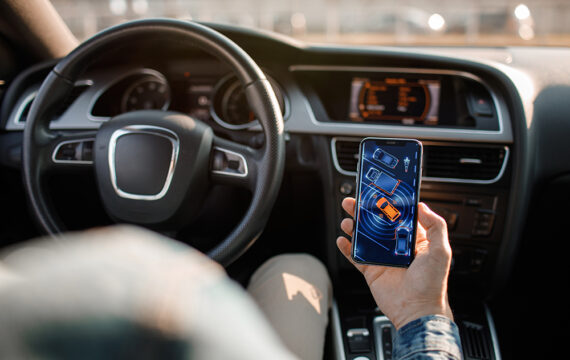Today, half of the world’s population lives in urban areas. The United Nations expects this proportion to grow to 68% by 2050. The needs of these urban residents are obvious. As they adapt to a city’s pace, culture, and spirit, they all want to get something in return: a little bit of comfort while commuting to work or the ability to anticipate a timely delivery. Such things can make anyone’s day better.
Cities should adapt to their citizens — to understand and care about them. And this is where AI in urban mobility steps up.
How can technology solution providers apply AI in urban mobility?
Despite the hype around artificial intelligence in urban mobility, even state-of-the-art AI applications perform only very specific tasks. Teaching traffic AI to predict and control traffic density, optimize the route to stick to the estimated time of arrival, and plan drone last-mile delivery seems like an easy job, but in reality it’s not. Road infrastructure, connected cars, and mobile devices generate only raw data. Mobility service providers need to put every effort into getting the most value out of this data and teaching AI systems how to interpret it. Mobility providers can then use these results to perform complex tasks and build an AI-powered mobility ecosystem with smart urban mobility solutions.
Ways to reinforce AI with big data generated across different sources

Adoption of AI in urban mobility brings benefits for both private stakeholders (citizens, mobility app users) and public stakeholders (municipalities, transportation and mobility service providers). Combining urban mobility and artificial intelligence software development, cities can start saving money on energy and transportation planning, while users can save time and nerves when commuting to work and receive better services using an intelligent routing system.
How is artificial intelligence used in mobility and transportation services?

Even the most developed cities have room for improvement in terms of the availability, convenience, safety, and performance of transportation, logistics, supply chains, and micro-mobility services.
Top 10 cities by urban mobility ranking

Source: McKinsey & Company – Elements of success: Urban transportation systems of 24 global cities
At the moment I need 17 apps to use all the various means of transport. In future this will probably be covered by just one app, that also knows my own personal preferences.
As cities continue to grow, municipalities and mobility service providers should prepare to mitigate the consequences of inefficient and environmentally unfriendly transportation systems. AI can play a huge role in the battle to design cities for people, supporting adequate growth while addressing its negative consequences impact. We’ll focus on the following AI-powered urban mobility solutions that make citizens fall in love with the cities in which they live:
- Intelligent routing and AI navigation systems
- Smart search for parking spots
- Traffic prediction and monitoring
- Improved road safety
- Enhanced delivery services
- Electrification of transportation and infrastructure
Intelligent routing and AI navigation systems
Nowadays, navigation systems are location-first tools that get contextual updates only quarterly or once a year. On-board navigation systems are usually based on proprietary map data that’s hard to update even with critical content like information about road repairs and emergencies. Moreover, drivers often complain about these systems’ detached user interfaces and outdated mobile device connectivity.
Drivers want to use navigation systems without stumbling with their functionality and be able to receive real-time contextual data personally tailored to them without being distracted from the road. Implementing best practices in the development of smart navigation systems and artificial intelligence route planning may alleviate pressure on busy and overcrowded streets across cities, assisting drivers in planning optimal routes. AI navigation may change a planned route in response to real-time events by collecting data from other cars, cameras, IoT sensors, and connected infrastructure.
The trigger for re-planning a route could be a traffic jam in the city center, worsening weather conditions and increased taxi calls, or the next Lakers game gathering thousands of fans around the Staples Center. AI navigation takes all these factors into account when offering route suggestions to save drivers’ time and save the whole city from being paralyzed by congestion.
Voice recognition based on natural language processing also contributes to the adoption of AI technologies in the car navigation segment. When drivers don’t need to manually input commands to their navigation system but can speak them instead, they can focus on the road, decreasing the chance of incidents.
Smart search for a parking spot
You may hurry for a meeting and arrive on time to your destination only to find there’s nowhere to park. All your speeding and rushing traffic lights didn’t save you. Your risks were in vain, as the parking in front of the building is full. Now you have to find a place to park a few blocks away. Probably every driver has faced the problem of finding a parking spot in the city center.
Smart navigation systems may plan routes taking into consideration where to leave the car while you’re doing your business. The typical smart parking search algorithm for mobile or in-car navigation systems goes as follows:

Watch an example of a smart parking solution to find a free parking spot during busy hours without losing extra time.
Predicting and monitoring traffic
The general approach to traffic monitoring and prediction mostly relies on data collected from sensors installed in cars and road infrastructure. This approach requires traffic management companies to collect real-time traffic data at the certain stretch to study traffic density there over a several-day period in order to predict future traffic. But unfortunately, this isn’t enough to get the whole picture of where the traffic is heading, its intensity and speed. Not to mention that urban infrastructure does not respond to increased traffic in any way. You may expect traffic lights to automatically go green to speed up cars in congestion, but no – they’re still red.
How about a traffic monitoring system that recognizes a driver’s intention to take a particular route? Information about an intended route can be shared by a navigation system after a driver enters a destination. This sort of data can be processed in the cloud to predict congestion even before it appears, and even to prevent traffic jams by suggesting alternative routes. This also could be of use to predict high traffic density by taking into account data on upcoming events. An advanced traffic management system can integrate all this data with traffic feeds, public transportation timetables, and a map of road incidents to observe real traffic patterns and predict possible ones.
Improved road safety
In overcrowded urban areas, everyone is hurrying to get where they need to go. Road incidents are the natural result. The reasons for accidents are obvious: negligent driving, violation of road rules, drinking and driving, poor road conditions, bad weather, and neglect of vehicle maintenance.
Automated driving and ADAS functions decrease road incidents and contribute to new shared mobility service models. Apart from recent trends in autonomous cars, AI is minimizing the human factor by monitoring a driver’s behavior at the wheel. In-car cameras coupled with computer vision algorithms are a perfect match for a comprehensive driver monitoring system. Such systems can detect if a driver has their eyes open, measure the angle of their head, and see the position of their hands on the wheel. An alert system may notify a driver and other road participants if something goes wrong. Also, fleet management providers can automatically plan a work schedule for drivers based on their weekly workload to driver’s fatigue. In case of an incident, posture management technology allows for the best possible deployment of airbags to reduce injury.
Enhanced delivery services
Who can imagine a modern city without delivery cabs and bicyclists with huge grocery bags on their backs? Not to mention large fleets of trucks making daily deliveries to stores. Modern delivery services allow people to order food at home and allow supermarkets to plan their stock knowing they’ll receive products from global supply chains. This reduces the demand on urban infrastructure from private cars but puts an additional load on delivery service providers and logistics companies.
AI-based delivery management software for planning delivery routes and forecasting demand can optimize logistics and help delivery providers keep their ETA promises to the consumers. And if you do decide to go shopping yourself, AI shopping assistants can plan your trip right from your home to the exact shelf with the item you want.
Electrification of transport and infrastructure

Automation and electrification of urban transportation systems plays a fundamental role in lowering the environmental impact of urbanization. Trusting AI to plan energy loads will keep bills lower while minimizing idle energy production. The application of artificial intelligence in transport together with the use of electricity as the primary energy source allows municipalities and service providers to plan transportation infrastructure efficiently and in more detail.
For example, the price for energy consumed by transport can dynamically change depending on the passenger load, weather, and type of transport. For users of electric vehicles, smart navigation solutions can use AI to plan routes while taking into account the location of charging stations.
In conclusion
Hype or not, implementing AI and now hot generative AI in urban mobility provides a competitive advantage for transportation service providers, logistics centers, and municipal organizations. But the true winners are city residents. Making urban spaces smarter can enable them to meet people’s everyday needs while shopping, commuting, or just hanging out around the city.
If you’re looking for opportunities to scale your business by implementing AI in the urban mobility space, contact Intellias experts.




